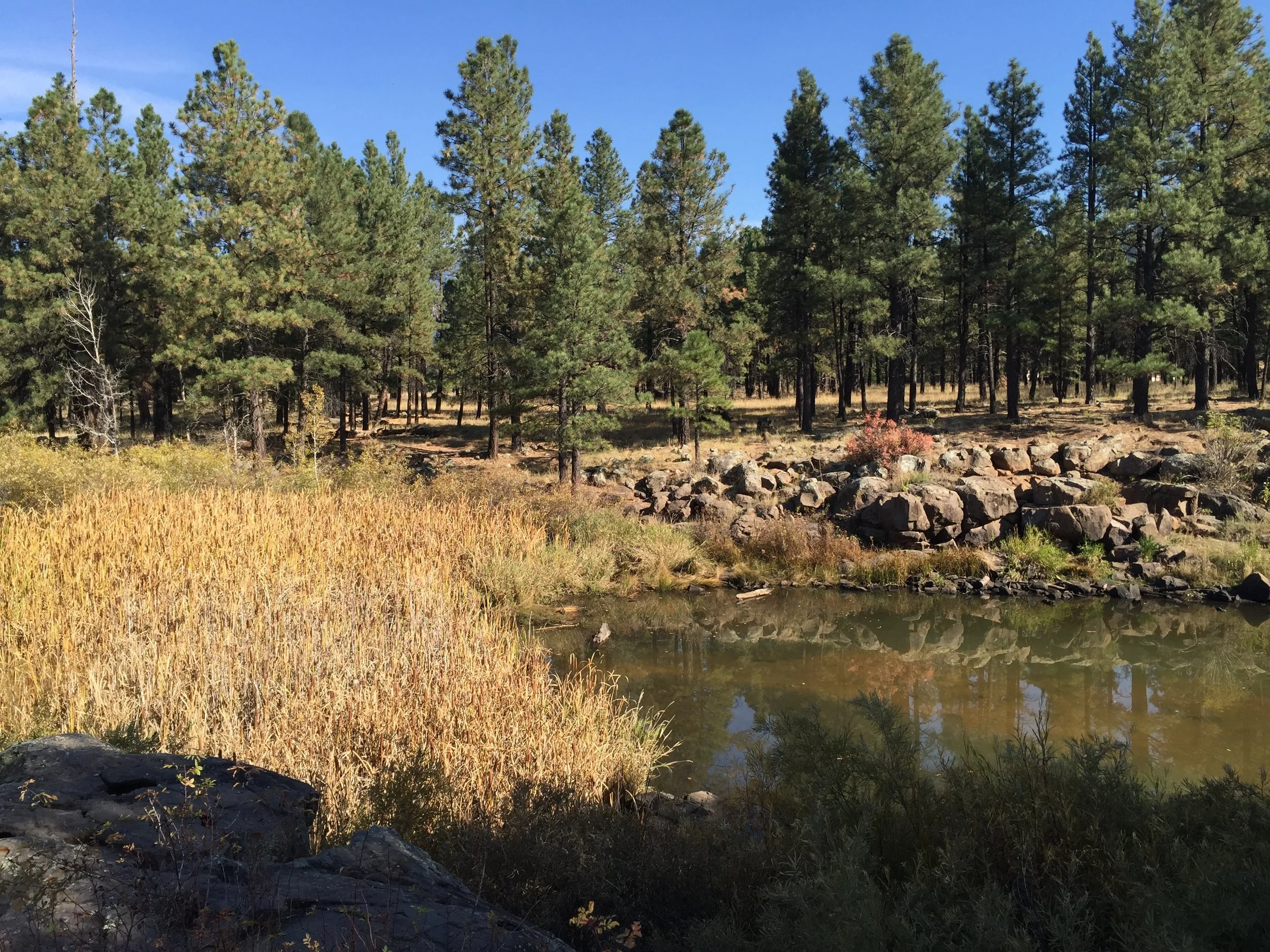About
Originating in a 1996 proposal for the "Cheshire Park Habitat Pond," the goal for this area is to enhance about two acres of riparian wetland area within the Rio de Flag floodplain and to promote the preservation and educational value of existing wildlife habitat. West of the Cheshire Dam (also known as the Narrows Dam), is an important urban wetlands area. The central goal is to preserve this area as a sanctuary for wildlife without further development, while providing a viewing area with two interpretive signs to educate area residents and visitors about its biological significance. This site is adjacent to the Museum of Northern Arizona site and links to beautiful sections of the FUTS trail to the south.
What You'll See
The Cheshire Wetland offers easily accessible wildlife viewing to the Cheshire neighborhood and visitors alike. Several interpretive signs, benches, and rock seating line the FUTS trail. Flagstaff Area Stream Team (F.A.S.T) and NAU's Cottonwood Ecology Group have planted native riparian vegetation and shrubs. This site is an excellent example of Northern Arizona riparian habitat restoration. Visitors will see migratory riparian and water birds, butterflies, hummingbirds, lizards, fox, salamanders, frogs, and more.
Getting There
From Flagstaff, drive north on Highway 180/Ft. Valley Road to the Cheshire neighborhood. Turn left onto Fremont Drive. There is a small parking lot at Cheshire Park, with access to the FUTS trail and Cheshire Wetland. The park also offers a playground, tennis courts, and seasonal portable restrooms.
Helpful Tips
Amenities
FUTS pedestrian/bike trail, benches and viewing areas, interpretive signage. Adjacent park with playground equipment, tennis court, and seasonal portable restrooms.
Access Info
Parking is available at Cheshire Park, or can be accessed on foot or by bicycle along the FUTS trail.
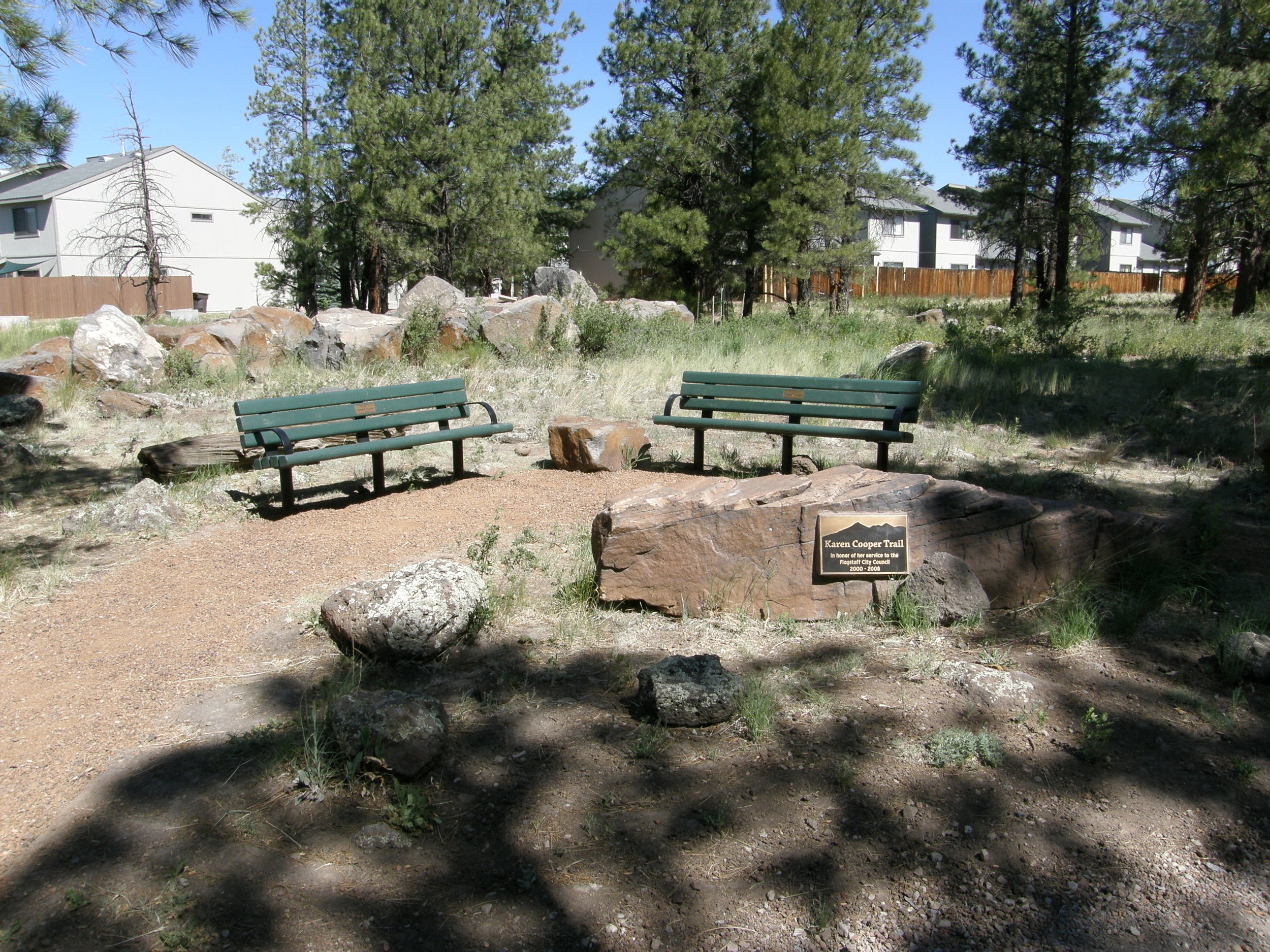
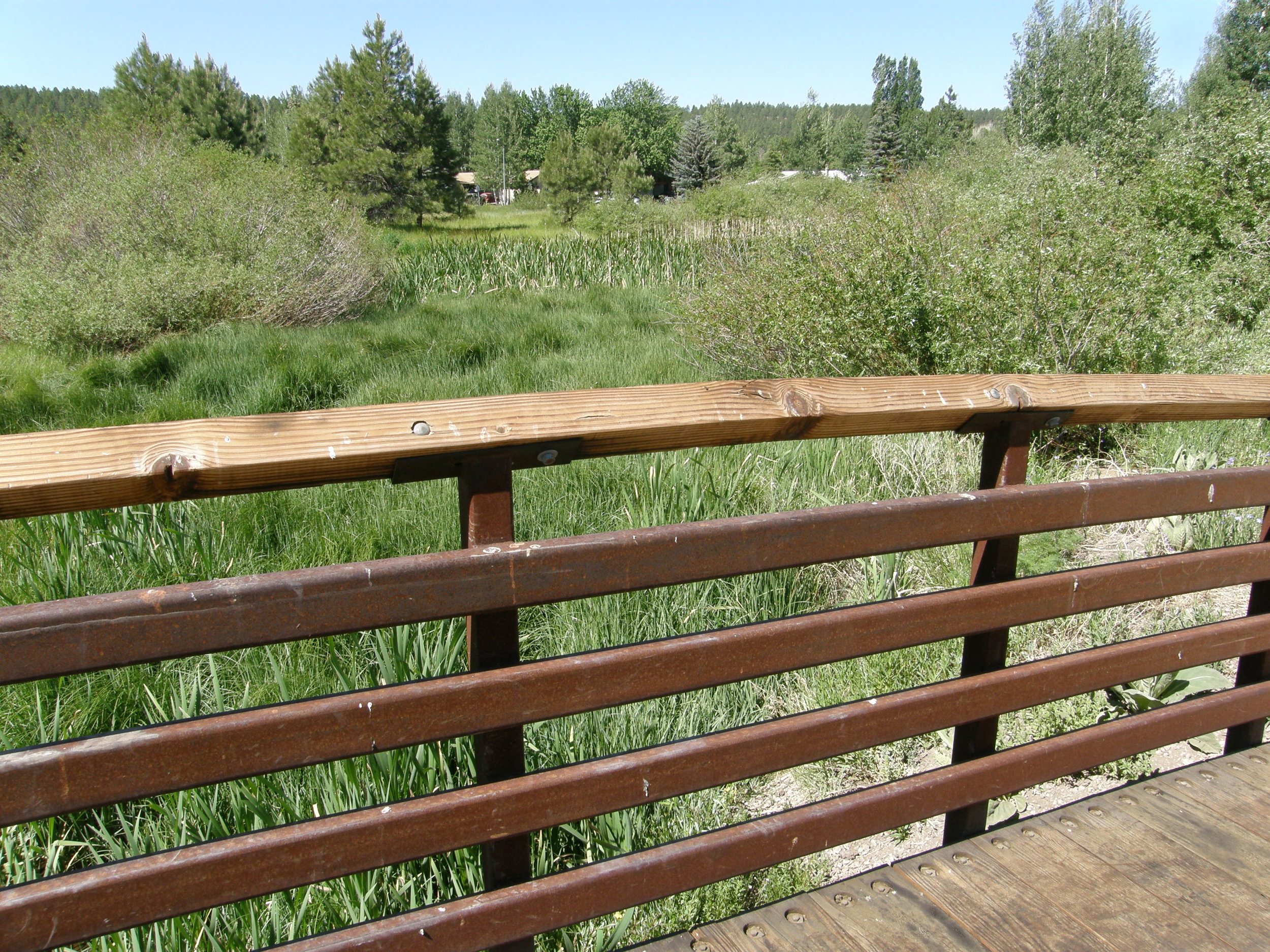
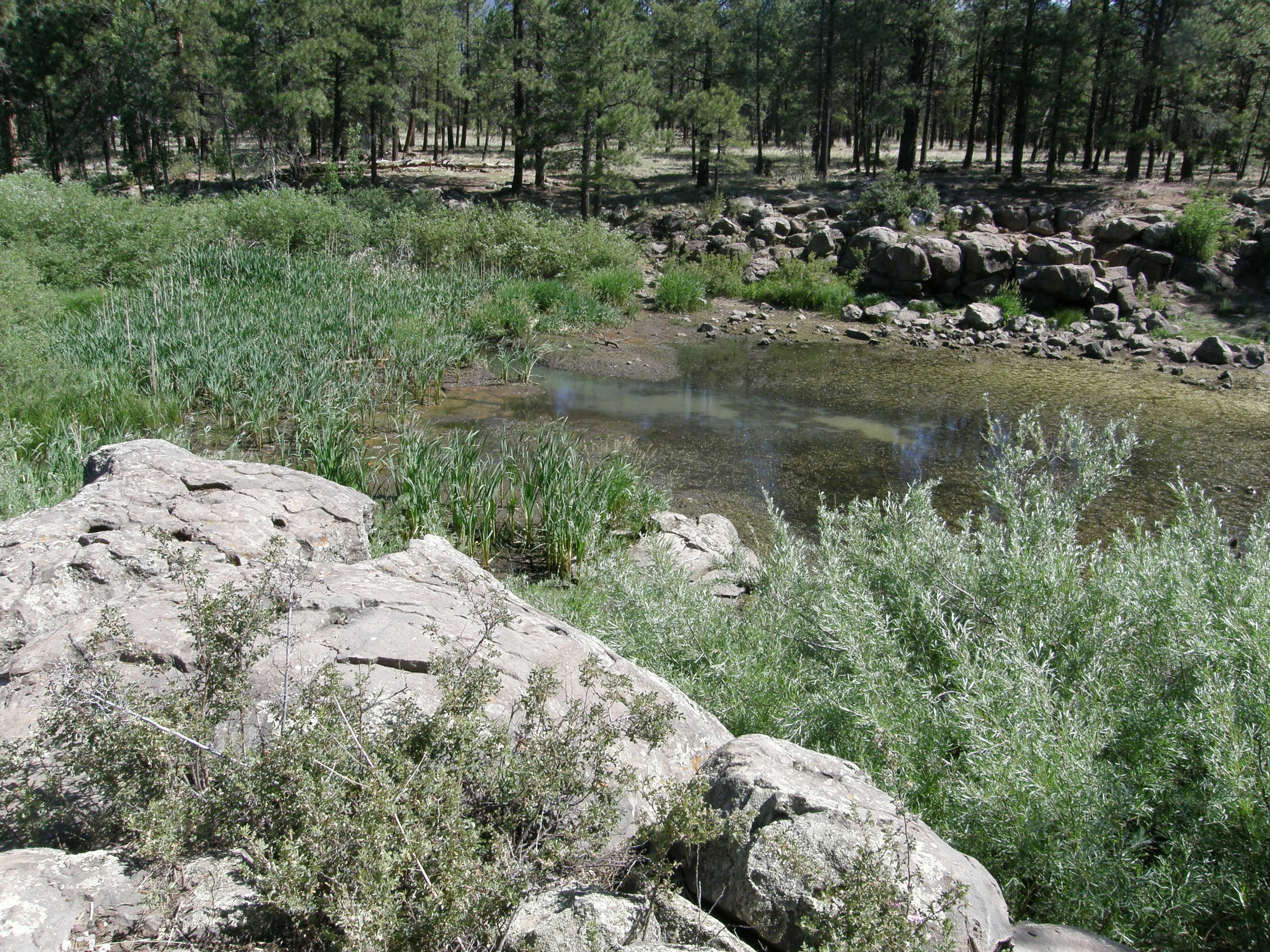
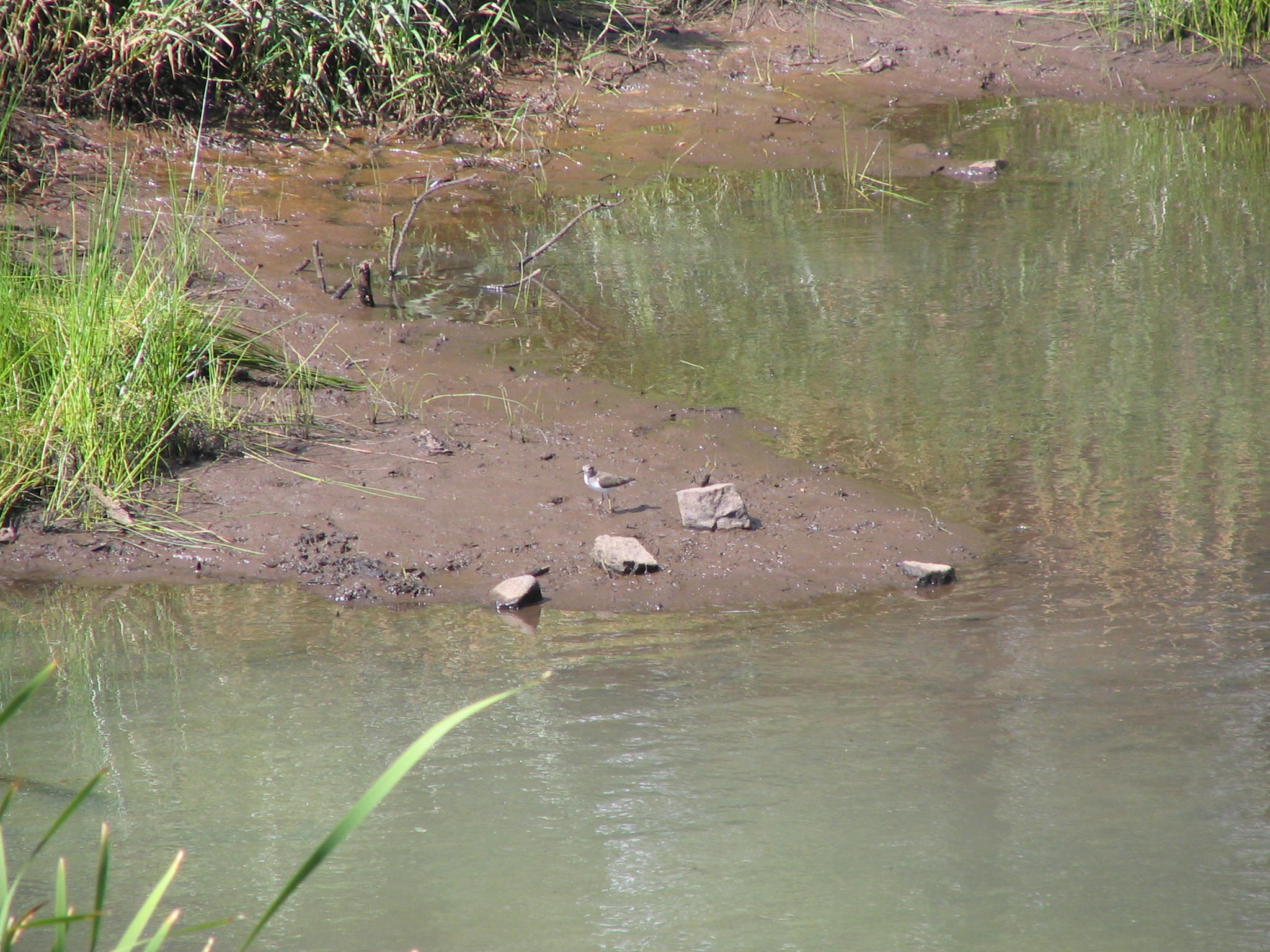
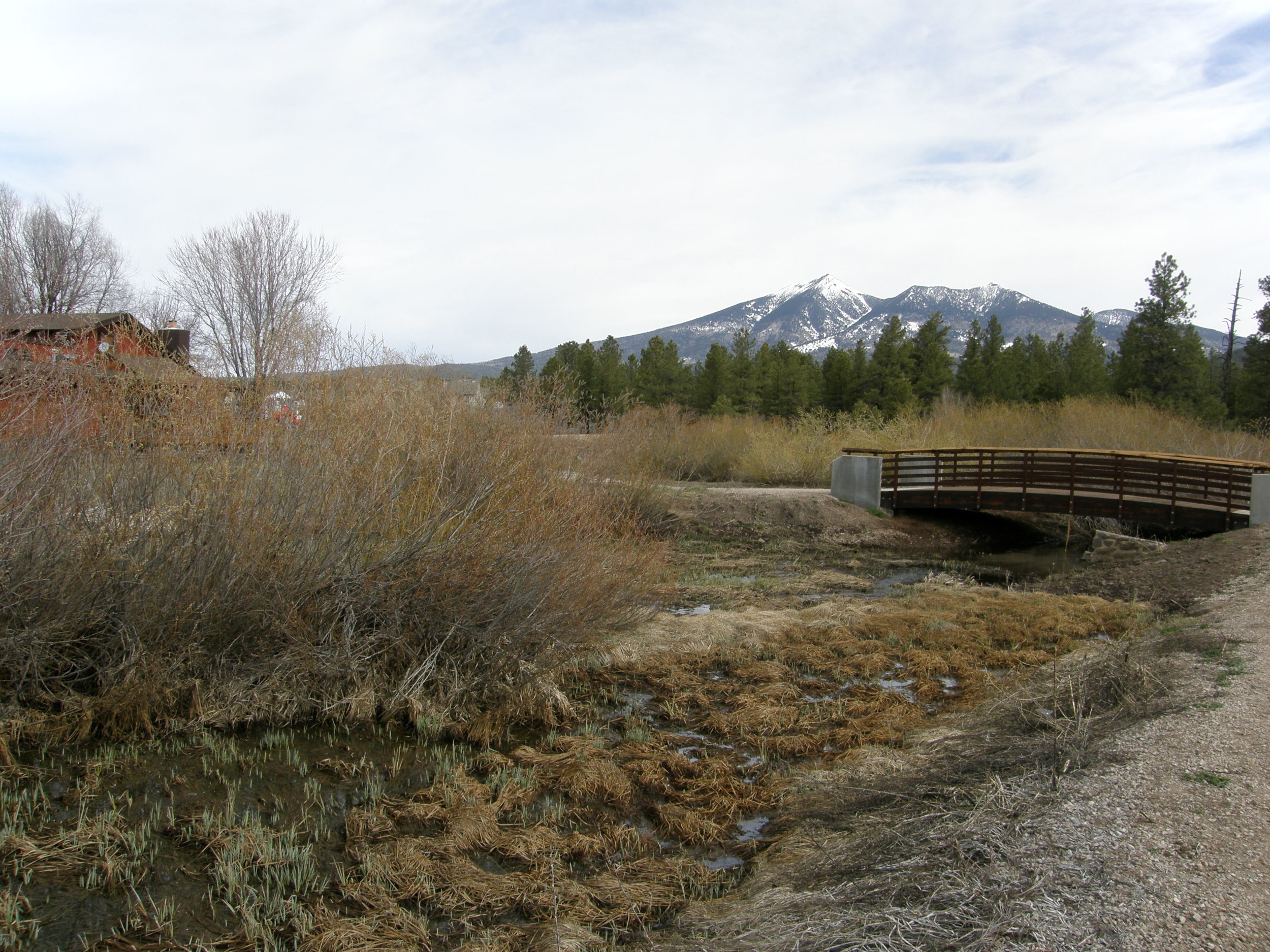
Hear about the bird species you’re likely to come across around Cheshire Wetlands in this AWWE audio guide. You’ll also learn about how to recognize the signs of porcupine activity and the habits of striped skunks (as well as how to discourage them from using your yard) with NAU biology professor Tad Theimer. Also, learn about the intriguing - and sometimes cannibalistic - habits of Tiger Salamander in the pond here from AZGFD biologist Susi MacVean.
Narrated by Rose Houk, recorded and produced by Diane Hope with funding from the AZGFD Heritage Fund.
Contact
City of Flagstaff
(928)213-2328
